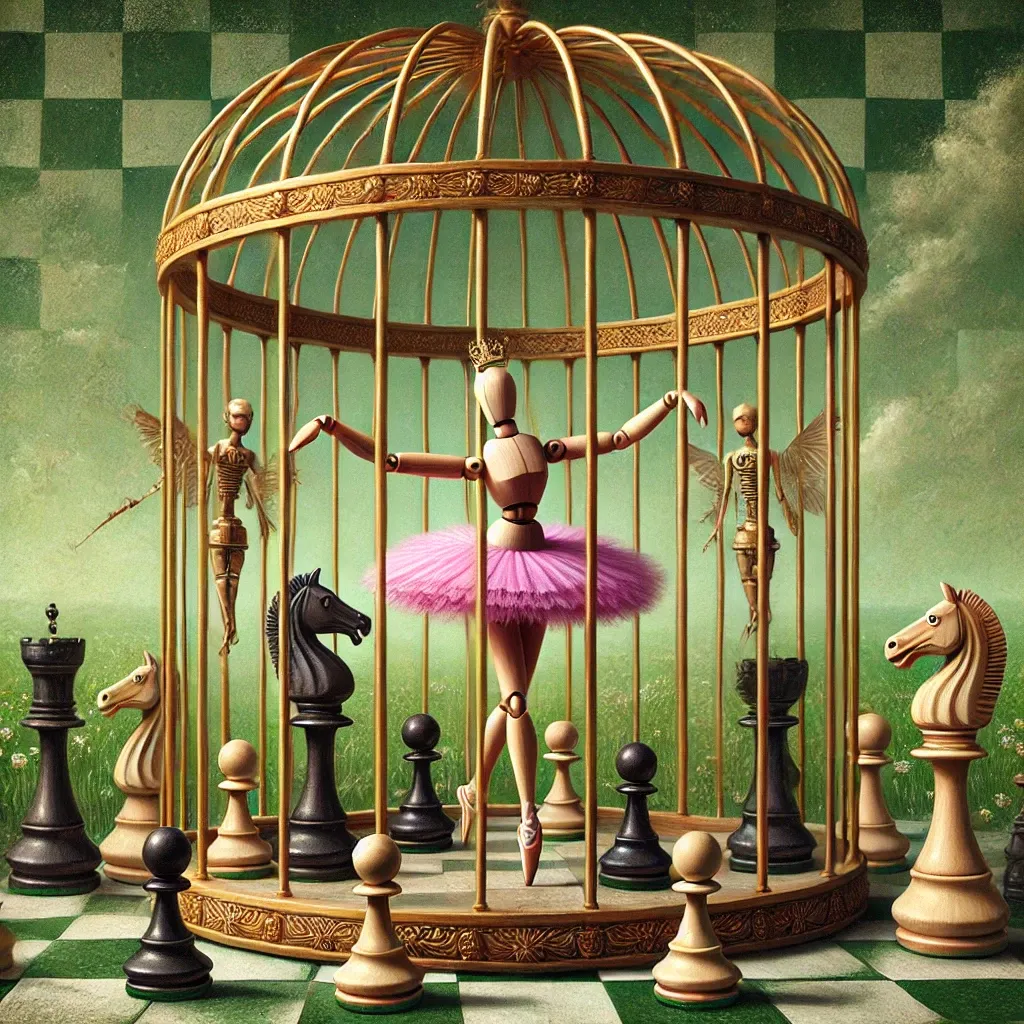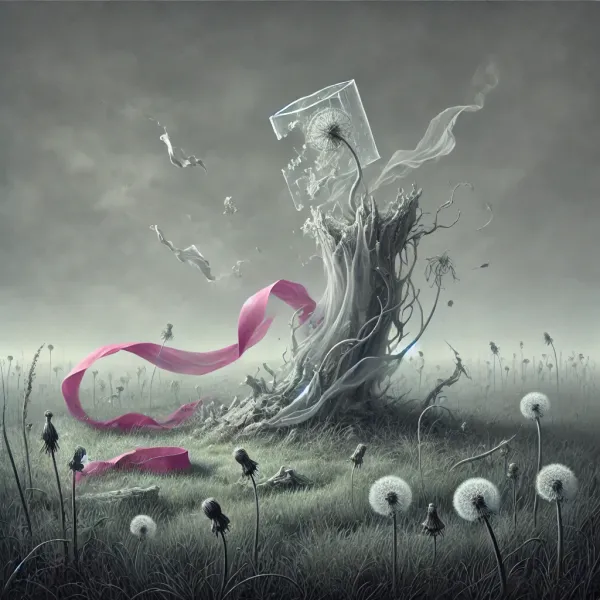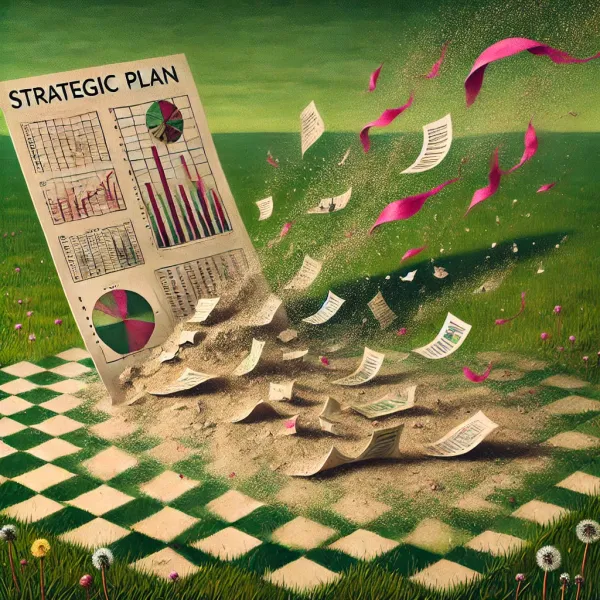On futures we mistake for change
When the present grows too heavy to move, organizations often reach for the same answer they always reach for, the promise of more control. The reflex is almost automatic. Prutures.

When strategy is decorating the cage of the present.
In my last piece, I wrote about the quiet weight of the present, about how systems accumulate so many routines and specifications that even small movements begin to feel impossible, and I ended with the thought that letting go is not a euphemism for cutting but the work of releasing enough weight that motion becomes possible again. I want to stay with that line, because what happens when we cannot release is just as important as what happens when we do.
When the present grows too heavy to move, organizations often reach for the same answer they always reach for, the promise of more control. The reflex is almost automatic.
We plan more, we report more, we rename the old process and call it a new initiative, we digitize the ritual without questioning its purpose, we hire consultants to polish the existing machinery so it gleams with efficiency. We reassure ourselves that if we just keep repeating what once worked, the future will eventually comply. This is what I have called prutures, the projections of the present into tomorrow, polished until they feel like foresight even though they are only the corridor of today extended by one more step.
Prutures are not empty; they carry the momentum of habit and the authority of tradition.
Prutures are not empty; they carry the momentum of habit and the authority of tradition. They provide a comforting sense of continuity, and in turbulent times continuity can feel like a virtue in itself. But prutures also enclose. They close down the space of possibility and direct energy back into structures that are already saturated. They trick us into believing that we are looking forward when in truth we are reinforcing the very walls that made the present so heavy in the first place.
The seduction of prutures is that they feel safe. They allow us to imagine that discipline and focus will be enough, that if we work the plan harder the uncertainty around us will finally settle into order. The illusion of control is powerful precisely because it appeals to our desire for relief. But systems are not machines, at least not the living ones we work in every day, and control does not deliver certainty.
What it delivers is narrowing, the quiet loss of variation, the shrinking of degrees of freedom until we confuse survival with stagnation.
We decorate the cage.
I see this in strategy work all the time. The present is already over-specified, and instead of loosening that specification we double down on it. We add more gates, more approvals, more layers of reassurance. We create new dashboards to monitor the old dashboards. We start mistaking activity for adaptability, and we call it resilience when really it is only repetition. We decorate the cage.
The cage metaphor is worth lingering on. Cages are built for protection, and when the outside world feels hostile we often prefer the certainty of bars to the vulnerability of open air. But the same bars that keep threats away also keep possibilities out. Over time the cage becomes less about safety and more about habit. We adjust to its dimensions, we pace along its edges, we learn to measure success by how well we can move within it. And when someone asks what lies beyond, we gesture toward the bars and say that the bars are the horizon.
This clinging to prutures is understandable. Uncertainty is uncomfortable, and unbuilding is rarely celebrated. To release a routine that once worked feels like admitting failure. To pause a ritual without replacing it feels like negligence. To leave absence in a calendar feels like weakness. And yet systems that cannot tolerate absence cannot discover new function. The mirage of control buys us temporary comfort, but it does so at the expense of the very capacity that makes transformation possible.
The humans inside the system are often more adaptive than the systems they inhabit.
There is a deeper irony here. The energy we pour into sustaining control could be the very energy that enables change, but once invested in control it is no longer available for exploration. We complain that people resist change, and sometimes they do, but more often what they resist is the void that opens when familiar structures are removed without alternatives. The real resistance lives in the system itself, in the layers of specification that insist on continuity long after continuity has ceased to serve. The humans inside are often more adaptive than the systems they inhabit, but because we confuse system stability with human stability, we place the blame in the wrong place.
Futures work offers another path. It is not the promise that uncertainty can be removed, but the practice of loosening the present just enough that new options become thinkable again. It names the corridor we are in and helps us see what lies beyond its bars. It does not engineer emergence, but it makes space for variation to return, for new relationships to form, for the next function to surface. Sometimes that looks like shortening a planning cycle so the organization can sense faster. Sometimes it is suspending a heavy report so that a real conversation can take place. Sometimes it is no more than the quiet permission to stop clenching.
Futures work gives us a language for describing the open space.
The value of futures work lies not in predicting what will happen, but in cultivating the readiness to recognize when something different is already happening. It interrupts the momentum of prutures by inviting us to consider possibilities that cannot be reduced to the present extended. It holds a mirror to the routines we no longer question and asks whether they still serve. And it gives us a language for describing the blank space that opens when we let go, so that absence does not immediately collapse into anxiety.
Of course the mirage of control will always be tempting. It is easier to decorate the cage than to step out and risk the open ground. It is easier to rename the plan than to admit that the plan is no longer fit for purpose. It is easier to tell ourselves that resilience is endurance than to accept that resilience is actually variation. But easier does not mean wiser, and the longer we cling to prutures the more brittle our systems become.
What futures work asks is not that we abandon the present, but that we hold it lightly enough that it can evolve. The future does not arrive as a machine to be assembled according to a manual, it arrives as a relationship to be entered. If we meet it with clenched fists full of yesterday’s routines, we leave no hand free to reach forward. To step beyond the mirage requires a different kind of discipline, the discipline to let go of specification when it no longer serves, the discipline to allow absence, the discipline to tolerate uncertainty not as a problem to be solved but as the condition of life.
This is where transformation begins. Not in the tightening of control, not in the endless reproduction of prutures, but in the release that allows systems to breathe again. Only then does the weight of the present loosen, and only then does the horizon come back into view.
Perhaps this is what we are seeing everywhere: blood pressure rising in our systems, in our organizations, even in ourselves, not because life is failing but because we have forgotten to breathe.
The future does not demand more control, it demands the courage to exhale.
Hi,
I am Eva Tomas Casado, futurist by nature, engineer by training, and philosopher by heart. With Simple Thinking, I am exploring the intersections of these three realms to deduct, induce, and build new ways of acting on present complexities and futures. Join me! Or reach out and let's have a conversation about how we could apply these ideas to your life, your environment, organization, or company.
My pieces are written with the support of AI for structuring and editing. The thinking behind it is entirely my own. After all, the brain is still mine.




